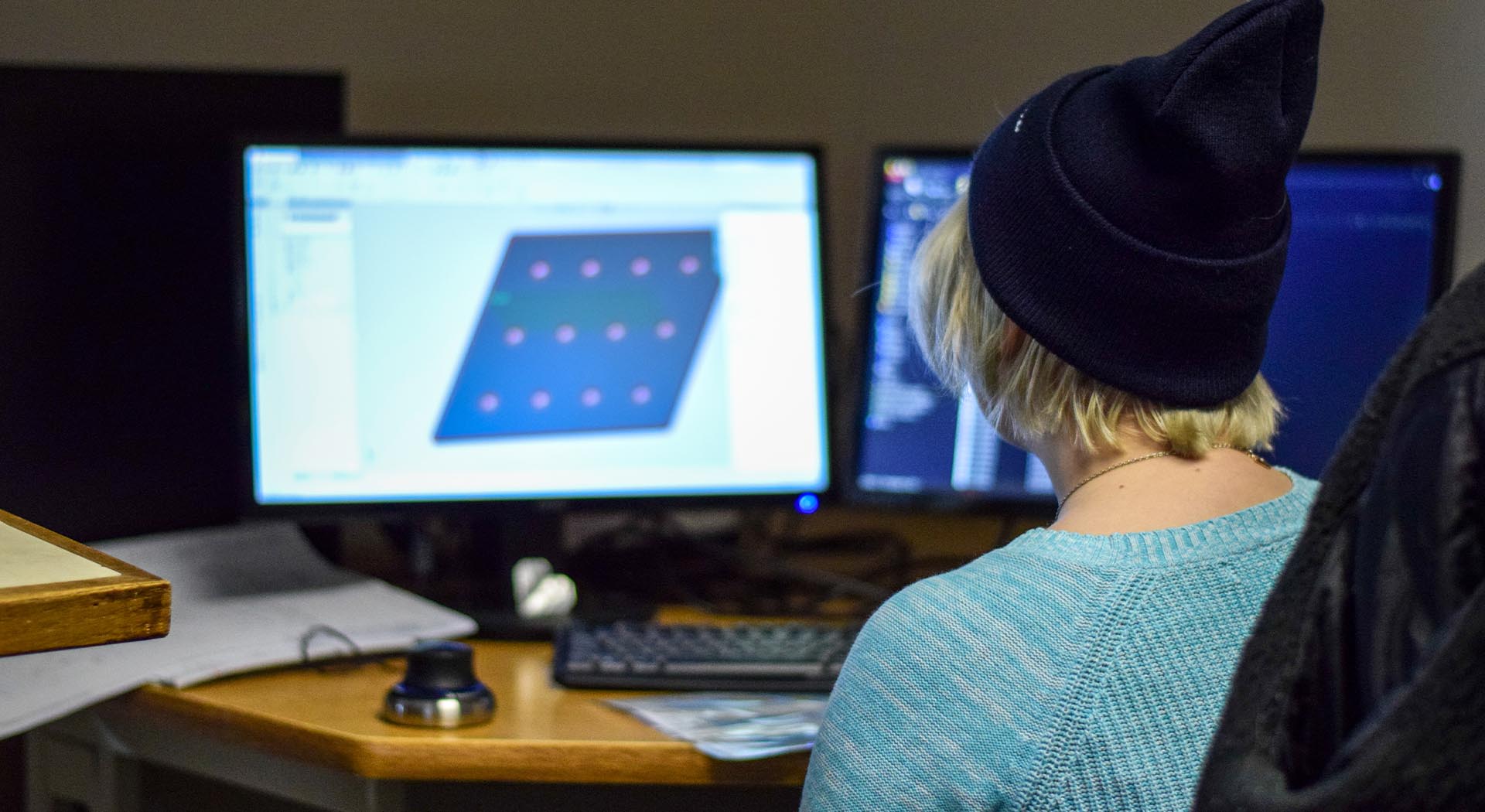*This is a Washington State average for this occupation. Wage rates vary by employer, industry, experience and location. Source: Washington State Employment Security Department 2021 Occupational Employment and Wage Estimates.
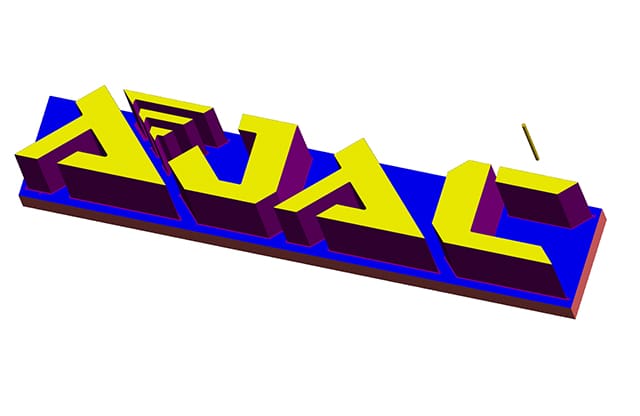
What is a CNC Programmer?
CNC Programmers develop programs to control machining or processing of metal or plastic parts by automatic machine tools, equipment, or systems. Students in the AJAC CNC Programmer Apprenticeship will learn to use CAD and CAM fundamentals to design for manufacturability (develop tooling).
Students will gain a thorough understanding of the underlying manufacturing processes that are essential to developing a part program; they will know how to build a part and will understand the role of the CNC Programmer in a team and an organization.
CNC Programmers:
- Establish manufacturing process for machining
- Develop tooling
- Create CNC code
- Verify Numeric Code in a software platform
- Develop set-up documentation utilizing various methods
- Manage manufacturing data
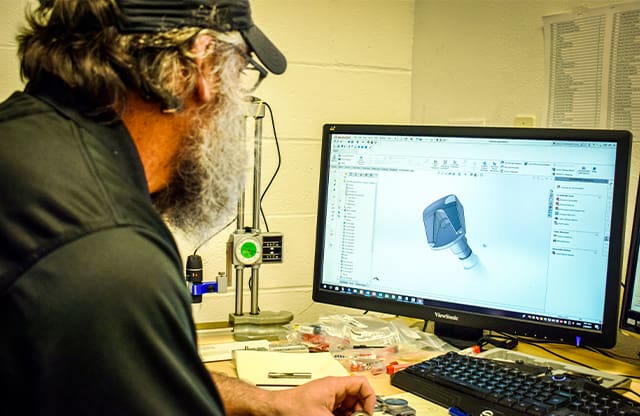
What are the Benefits of Becoming a CNC Programmer?
CNC Programmer is an advanced apprenticeship occupation that reinforces advanced programming techniques along with computer sided design fundamentals, design for manufacturability and project management.
Upon completion of a CNC Programmer apprenticeship, you will receive a nationally-recognized journey-level credential and can move onto more advanced occupations such as Tool & Die Maker, Maintenance Manager, or Operations Manager.
As a CNC Programmer, you will enjoy a long-term career with a good salary, job advancement opportunities, and the chance to work with your hands and cutting-edge technology.
Step to Becoming an Apprentice


6 Steps to Becoming an Apprentice
Get Hired by a Participating Employer AJAC Partners With
Receive Participation Approval from Your Employer
Sign an Apprenticeship Agreement with AJAC
Enroll in AJAC’s Apprenticeship Classes Each Quarter
Log and Submit Your OJT Hours Monthly
Receive a Nationally-Recognized Journey-Level Certification from L&I
How Much Can I Earn?
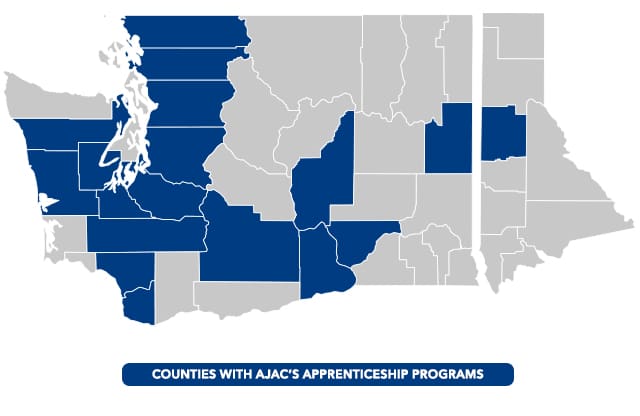
Where Will I Work?
AJAC has partnered with 300+ advanced manufacturers to provide supervised, structured, paid on-the-job training.
AJAC apprentices can only work for companies that agree to hire them and place them into the program.
Each company has their own methodology for who they select as an apprentice.
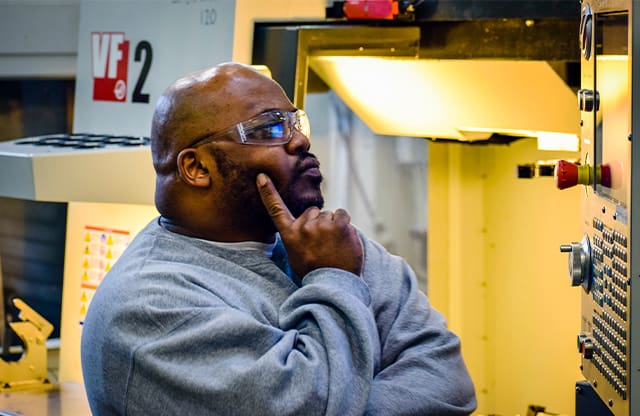
Where Are Classes Held?
Classes are held virtually, one night a week, typically on a Tuesday, Wednesday, or Thursday from 5:00 pm to 9:00 pm.
CNC Programmer apprenticeships classes are structured for online learning via Zoom.
Program Entry-Points
This program is designed as a training for journey level Machinists. It has been structured as a 4,000 hour program for journey-level machinist graduates or those with a college certificate/degree.
For individuals with at least 5 years of proven machining experience, this is a 6,000 hour program to accommodate experienced Machinists achieving their journey level status through work experience but lacking formal academic preparation.
Based on subject matter experts and employer recommendations, the following is the candidate eligibility criteria:
- Apprenticeship Completion: Journey-Level Machinist. Automatically awarded first year course work (3 classes) and 2,000 OJT Hours.
- College Certificate or Degree + Industry Trained | 5 Years of Experience/Certificate or Degree: Up to 2 classes of the first year’s coursework and 1,500 OJT Hours.
- Industry Trained | 5+ Years of Proven Machining Experience: Required to complete all 9 RSI Classes and 6,000 OJT Hours.
| Apprenticeship Class | Apprenticeship Completion | Industry Trained | College + Industry Experience |
|---|---|---|---|
| YEAR 1 | |||
| APM 103: Engineering Drawings | O | X | TBD |
| APM 122: Geometry & Trigonometry | O | X | TBD |
| APM 201: GD&T | O | X | TBD |
| YEAR 2 | |||
| CNC 201: CAD Fundamentals | X | X | X |
| CNC 202: Design for Manufacturability | X | X | X |
| CNC 203: Manufacturing Processes Related to Project Management | X | X | X |
| YEAR 3 | |||
| CNC 204: Basic Tool Path for Mill & Lathe | X | X | X |
| CNC 205: Multi Axis/Indexing | X | X | X |
| CNC 206: Advanced CNC Programming Techniques | X | X | X |
| TOTAL CLASSROOM HOURS: 450 | |||
Apprenticeship Classes
CNC Programmer apprentices take 6 college-level classes (or 9 college-level classes if you are not a journey-level machinist). Each class consists of 50 hours of lecture and/or practical application. Upon completion of each class, apprentices will receive 5 college credits.
As a registered apprentice, you automatically receive 50% reduced tuition. Over half of AJAC’s partnering employers elect to pay for their apprentice’s tuition, making the entire apprenticeship free-of-cost.
Currently, each class costs $380 out-of-pocket.
Learn to read and interpret engineering drawings and schematics, as well as practice basic drafting. Drawings studied in this class will come both from the text and from industry, and will include machining, fabrication, assemblies, and fluid power systems (only for Automation/Maintenance program).
This course focuses on the fundamentals and applications of geometry and trigonometry. Topics include perimeters, areas, volume, trigonometric ratios and function, right angles and non-right angles. Apprentices will discuss relationships of lines, planes, angles, congruent and similar triangles, polygons and circles while performing geometric and trigonometric functions as they relate to manufacturing and aerospace. Other topics include special triangles and the Pythagorean Theorem.
Apprentices will study the theory and application of the use of standard tolerances and GD&T concentrating on geometric dimensioning and its relation to engineering drawings.
In this course, students learn foundational CAD skills such as data management, validation, drawing arts and tooling that are essential for CNC Programmers.
Foundational CAD skills such as data management, validation, drawing arts and tooling that are essential for CNC Programmers. Work-holding solutions for each manufacturing sequence, develop jigs to aid manufacturing process, establish 3D data sets for each work-holding sequence, create bill of materials lists, design custom cutting tools, create set-up documentation etc.
Confirming customer requirements, defining manufacturing sequences, performing risk assessments to identify manufacturing issues, selecting tools, and documentation.
Use 2D and 3D CAD to create basic tool paths for both mills and lathes. Apprentices will create and verify CNC code, develop set-up documentation, and verify manufacturing data meets current engineering revisions.
Create basic macro programs, sub programs, subroutine programs and 3 + 12 axis programming Multi-axis CAM tool paths for mills and lathes and indexing. Apprentices will create CNC code, verify CNC code, and develop set-up documentation for more advanced machines and projects.
How to choose the specific tooling for the job based on the complex material being used, and create tool list documentation procedures. They will calculate cycle times and record cycle times, to understand job scope.
On-the-Job Training Competencies
The table below is a schedule of tasks and hours designed as a guide. The 6,000 hours (or 4,000 hours if you are a journey-level machinist) will be completed over the course of the apprenticeship. The apprentice shall be instructed and trained in all operations and methods customarily used on the various machines. Each company will adhere to the schedule as closely as facilities will permit in order to provide the apprentice with well-rounded experience and practice on all relevant equipment and processes in the shop.
| OJT Competency | Approx. OJT Hours |
|---|---|
| Advance CNC Set-Up & Operations (4-axis, 5-axis process) | 2,600 |
| Material Process, Quality Assurance and Cutting Technology | 550 |
| Advance Inspection, Parts Finishing, Deburr and Administrative Work | 300 |
| Establish Manufacturing Process and Develop Tooling | 1,050 |
| Create CNC/NC Code, Identify Numeric Code | 1,000 |
| Develop Set-Up Documentation and Manage Manufacturing Data | 300 |
| Provide Internal/External Customer Service | 200 |
| TOTAL HOURS | 6,000 |
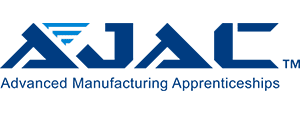
Launch Your Career Today!
Submit your information using the link below. After we receive your information, an AJAC representative will contact you for next steps. Please note, this is not an official application to become an apprentice. After a partnering employers agrees to enroll you in the program, you will officially apply and enroll at that time.
